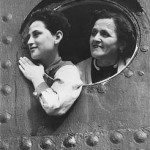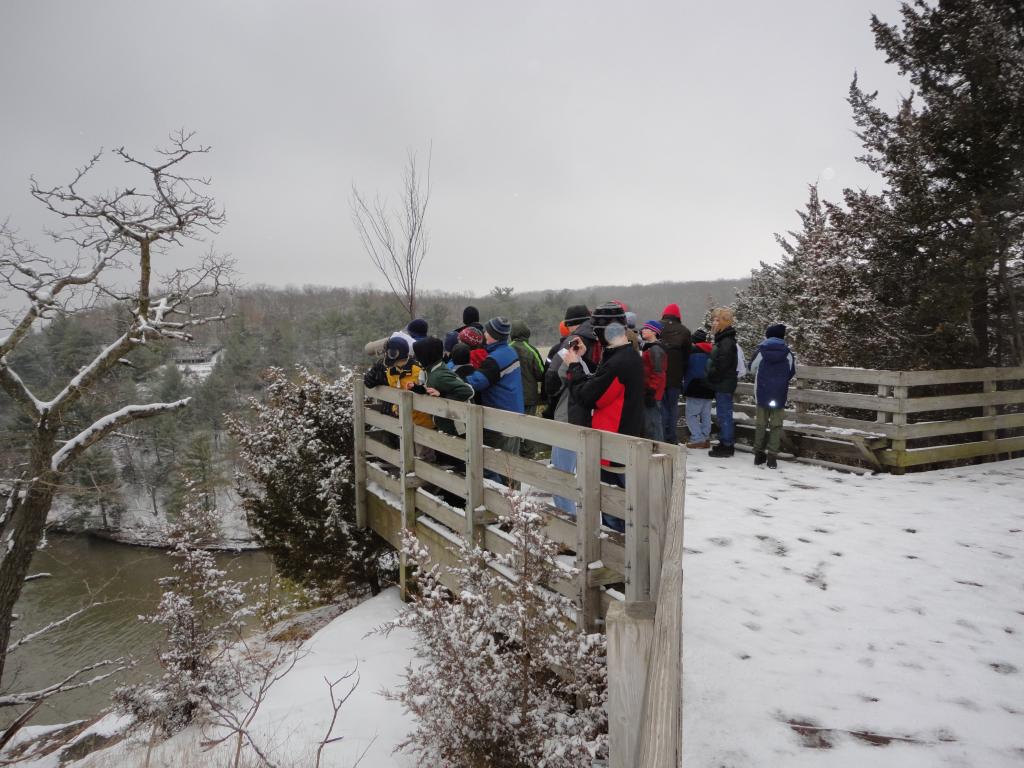![By David Fine (This image is from the FEMA Photo Library.) [Public domain], via Wikimedia Commons](https://wp-media.patheos.com/blogs/sites/533/2015/11/FEMA_-_44431_-_Boy_scouts_Place_Flags_at_Tennesse_National_Memorial_Cemetery-1024x682.jpg)
The situation is a bit different than prior reports of individual girls; here is a group of friends who sought membership:
The Unicorns began to consider themselves Boy Scouts last fall, after they enrolled in a skills-building course, Learning for Life, that is affiliated with the organization and is offered to boys and girls. Several Unicorns had tried the Girl Scouts but found the experience too sedate: rest time and whispering instead of playing tag and lighting fires. . . .
Led by Ella’s mother, Danelle Jacobs, 43, the Unicorns moved quickly from the course lessons to more formal Boy Scout activities: earning badges, hiking alongside boy groups and buying uniforms that mimicked those worn by boys.
The story goes on to relate that the formal request for membership was turned down, or, rather, the council leadership said “they would forward the girls’ requests to the national office, but said they had no local authority to admit them.” And a Girl Scout spokesperson invited the girls to re-try Girl Scouts.
As usual, the comments (at both Althouse and the NYT) are more interesting than the article. Some suggested that the Boy Scouts should go co-ed, following the model of European scouting movements. Others, quite sensibly, said that boys and girls at that age (e.g., late elementary and middle school) need sex-segregated opportunities, that high schoolers have the option of co-ed Venturing, and that the girl’s leader would serve them better by offering outdoor activities through Girl Scouts. Even among the NYT’s lefty readership there was a lot of support for sex-segregated groups!
A couple thoughts:
1. It seems to be far more true in Girl Scouts than Boy Scouts that the program is dependent on the troop-level leadership. For Boy Scouts, the norm is a monthly outing. For Girl Scouts, it’s all a matter of whether the leaders are interested in camping, as it’s wholly optional and incidental to the primary Girl Scout program, which consists much more of a “girl power,” environmentalist, and social justice-based agenda, with the “journeys” program replacing badges. In Boy Scouts, in contast, camping is integral, and you can’t advance in rank without it. The American Heritage Girls have modeled themselves after Boy Scouting to a certain degree, with a “rank advancement” concept, but they are, of course, not an option for non-Christian girls. But it boils down to this: if girls want camping, and they experience Girl Scouts as potholder-making and cookie-selling, then the Girl Scout national leadership and/or their own local community have failed them — unless they are actually in the minority and their peers are largely happy with potholders. What do girls, by and large, truly want?
2. It is true that in Europe, scouting is typically co-ed, and there’s nothing horribly wrong with this. It would just be different, that’s all. Boy Scouts, when run well, offers citizenship development, leadership, and simply learning to function in a group, in things like cooking and cleaning, tent take-down, etc., in an outing, to boys who often find it challenging, much more so than girls, especially at the middle-school age. In the article, parents did indeed raise the concern that boys would lose out in leadership development to more-mature girls.
3. And at the same time, in the U.K., at least, and in other countries, there are two scouting organizations: Scouts, and Girl Guides. In other words, the Boy Scouts have gone co-ed, but the Girl Scout equivalent stayed single-sex. What would happen to Girl Scouts, if Boy Scouts (and Cub Scouts) went co-ed? Would the former attract the girly-girls, who like princesses and crafts, and the latter bring in those who like the outdoors? One commenter suggested that there was an unofficial agreement by the Boy Scouts to keep the group single-sex, because otherwise the Girl Scouts would lose their membership. And would it be fair to boys to take away this single-sex group while girls still retain this option?
4. The Girl Scouts, of course, have the same sex-segregating policy; they only welcome boys who identify as girls, not boys who simply like crafts. However — a little tangent here — remember the case of Bobby Montoya, a child who was first rejected from, then accepted by the Girl Scouts? I had remembered this as a case of a “transgirl” but it’s not: according to this 2011 Daily Mail article, he identifies (and his mother identifies him) as “a boy who likes girl things” but it was the Girl Scouts who required that he identify as a girl to be accepted, which strikes me as tragic, to welcome a child only if he becomes not just “nonconforming” but “transgender.”
5. The most interesting complaint about boys-only Boy Scouts was this: there’s a cachet to being an Eagle Scout. It’s a source of pride, and there’s an instant recognition that this is an accomplishment: it says that the boy has earned a given number of merit badges, including specified badges around First Aid and such, has held leadership positions in the troop, and has undertaken a major service project, requiring not just effort but leadership. The Girl Scouts’ Gold Award? They’ve got the same service project requirement, though it’s not clear from their website what the precise requirements are. According to wikipedia, the girl needs to complete two “Journeys” and do a service project of at least 80 hours, though without the Boy Scout requirement for leading a team. And despite the proclamations of its prestige on the Girl Scouts website, wikipedia’s list of famous recipients is pretty short.
Is it unfair that the Gold Award doesn’t have the same recognition? Maybe — but whose fault is it? Is it simply the result of Girl Scout leadership, over generations, not having created the prestige? And if it is all a matter of prestige, which can’t be legislated (as opposed to the tangibles — there are scholarships a-plenty for girls, and the opportunity to join the military at an advanced rank exists for both), do girls have a right to demand access to the boys’ award? Of course not.
6. And, finally, is this likely to go anywhere? No. It’s one woman, and five girls, and a New York Times reporter.
(By the way: Ann Althouse, as is often her practice, simply linked to the article with a brief quote. I periodically think that, just to share things with readers that I find interesting, even if I don’t have the time to comment on them, I should do the same, rather than my stop-gap practice of saving those links onto my facebook page, but I never quite seem to manage that, as it never just feels right to say, “here’s a link.”)











